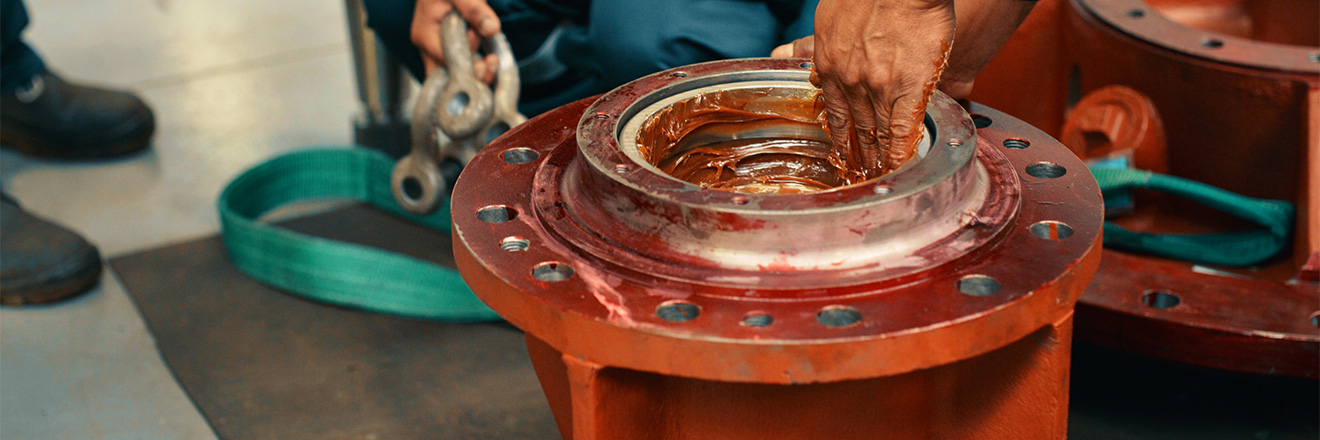When selecting a lubricant for your machinery, the key is to consider the application of the equipment. Disregarding the manufacturer's recommendations for any piece of equipment or component could potentially lead to failure of the equipment or voiding the machine's warranty. Of course, there are exceptions to this, particularly as it relates to the environmental conditions, speed, load and operating temperature.
Whenever a new machine or component is installed, one of the first things to be addressed is the type of lubricant to use. Typically, the equipment will come with a recommendation from the manufacturer. While this recommendation may be somewhat vague, it can provide crucial information including viscosity, base oil type, and additives-all of which must be considered when choosing a lubricant that will give your equipment the optimal lifespan.
Base Oil Type
The base oil type is a key factor in lubricant selection. The American Petroleum Institute (API) has 5 base oil designations. The first three groups are derived from crude oil (mineral oil); Group IV base oils are fully synthetic; Group V is for all other base oils not included in Groups I through IV.
- Group I base oils are some of the cheapest base oils on the market and go through a simpler refining process.
- Group II base oils are often manufactured by hydrocracking and are becoming more prevalent in today's market. They have a clearer color and better antioxidation properties.
- Group III base oils generally are severely hydrocracked. They are sometimes described as synthesized hydrocarbons and are designed to achieve a purer base oil.
- Group IV base oils are polyalphaolefins (PAOs). Synthesizing is the process used to produce these synthetic base oils, which are ideal for a wide range of temperatures.
- Group V base oils include all other base oils, such as polyalkylene glycols (PAGs), phosphate esters, etc. These oils are sometimes mixed with other base stocks to enhance oil properties.
Base Oil Viscosity
Because grease is 80%-90% oil, the viscosity of the base oil is important. It should consider the speed, load and ambient and operating temperatures. While this is a great start when choosing a lubricant, keep in mind that the working environment of the component or machine could be outside the manufacturer's tested parameters.
The higher the viscosity, the greater the resistance to flow. Lower viscosity oils have less resistance and flow quickly. Why is this important? The goal of lubrication is to separate metal surfaces with a film of oil just thick enough to prevent metal to metal contact. If the film is too thin, it causes contact between the metals resulting in wear. If the viscosity is too high, it causes excessive drag which results in reduced efficiency and excess heat.
Additive Package
Another consideration is the additive package. Additives have three basic roles: to enhance your grease with antioxidants, corrosion inhibitors, etc.; to modify your base oil properties with pour-point depressants and viscosity index improvers; and to give new characteristics to the grease such as extreme pressure properties and metal deactivation. Remember, once your additives are depleted, they are no longer effective.
It is very important to understand that most of these additives get consumed and depleted by:
- "decomposition" or breakdown,
- "adsorption" onto metal, particle and water surfaces, and
- "separation" due to settling or filtration.
The adsorption and separation mechanisms involve mass transfer or physical movement of the additive.
For many additives, the longer the lubricant remains in service, the less effective the remaining additive package is in protecting the equipment.
When the additive package weakens, viscosity increases, sludge begins to form, metal surfaces become more susceptible to corrosion, and/or wear begins to increase. Low quality oils can also reduce the effective life of the grease.
Bottom Line
Using the appropriate grade and type of lubricant is essential for proper bearing performance. It is usually best to adhere to the original equipment manufacturer's recommendations when making your lubricant selections. Failure to do so can lead to shortened equipment life. However, if you decide not to follow the manufacturer's recommendations, be sure to consider the temperature, application and conditions.
